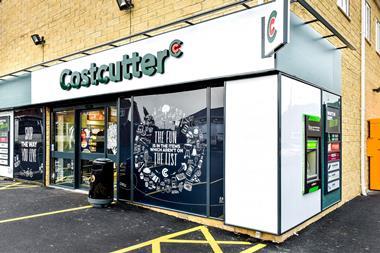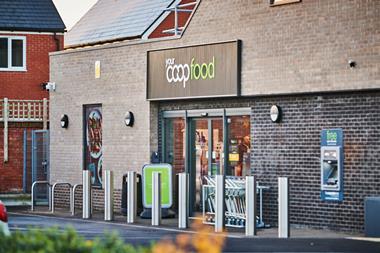The convenience sector has grown at more than double the rate of the total grocery market in the past year and is set to smash through the £30bn mark by 2008, predicts the latest IGD Convenience Retailing report.
The report reveals that the convenience sector is now worth £23bn, 7.3% up on 2003, while the total grocery market has grown by 3.3% over the same period to £115bn.
The c-store sector now commands 20p in every pound spent on grocery and average weekly sales have shot up 9.7% on last year, the top performers coming from the co-operative sector with average sales per store of £22,568, followed by the convenience multiple sector with £19,589.
The IGD, which defines a
convenience store as any store under 3,000 sq ft that sells at least seven core categories in a prescribed list of 15, attributes the strong results from the sector to rising consumer demand, the raft of recent store conversions and refurbishments and improved operational practices.
Highlighting the fact that the growth has come despite a slight fall in the number of stores to 53,500, IGD senior business analyst James Walton, the report’s co-author, said: “Not only is consumer demand there, but the retailers are doing a better job of satisfying it.
“The revamping of stores has tended to drive performance, but the key thing is the shift to large pack sizes and the shift to more value-added fresh food.”
Co-author, IGD senior business analyst Gillian Meek, added: “Product mix has historically seen a lot of CTN-type products. Now they’re moving into more top-up and high value items.”
A shift in focus to more fresh and chilled lines has seen confectionery drop out of the top five largest c-store categories for the first time.
It has been replaced in fifth place by non-food, primarily because of growing sales of phone cards.
Fresh and chilled is third behind tobacco and beers, spirits and wines.
The report also reveals that although the number of stores has fallen, the average store size has increased from 1,371 sq ft to 1,418 sq ft since 2003.
Bootlegging and rising operator costs still posed a threat, said Walton, but the fact that fewer stores were driving growth reflected the fact that the weakest operators were being forced out of the sector.
“The days of the grotty shops have gone. Today’s convenience stores offer a slick modern, clean and inviting environment.
“They have applied the cookie cutter to many of the ideas pioneered by the multiples and have better category management, better logistics and more support from suppliers.”
Liz Hamson
The report reveals that the convenience sector is now worth £23bn, 7.3% up on 2003, while the total grocery market has grown by 3.3% over the same period to £115bn.
The c-store sector now commands 20p in every pound spent on grocery and average weekly sales have shot up 9.7% on last year, the top performers coming from the co-operative sector with average sales per store of £22,568, followed by the convenience multiple sector with £19,589.
The IGD, which defines a
convenience store as any store under 3,000 sq ft that sells at least seven core categories in a prescribed list of 15, attributes the strong results from the sector to rising consumer demand, the raft of recent store conversions and refurbishments and improved operational practices.
Highlighting the fact that the growth has come despite a slight fall in the number of stores to 53,500, IGD senior business analyst James Walton, the report’s co-author, said: “Not only is consumer demand there, but the retailers are doing a better job of satisfying it.
“The revamping of stores has tended to drive performance, but the key thing is the shift to large pack sizes and the shift to more value-added fresh food.”
Co-author, IGD senior business analyst Gillian Meek, added: “Product mix has historically seen a lot of CTN-type products. Now they’re moving into more top-up and high value items.”
A shift in focus to more fresh and chilled lines has seen confectionery drop out of the top five largest c-store categories for the first time.
It has been replaced in fifth place by non-food, primarily because of growing sales of phone cards.
Fresh and chilled is third behind tobacco and beers, spirits and wines.
The report also reveals that although the number of stores has fallen, the average store size has increased from 1,371 sq ft to 1,418 sq ft since 2003.
Bootlegging and rising operator costs still posed a threat, said Walton, but the fact that fewer stores were driving growth reflected the fact that the weakest operators were being forced out of the sector.
“The days of the grotty shops have gone. Today’s convenience stores offer a slick modern, clean and inviting environment.
“They have applied the cookie cutter to many of the ideas pioneered by the multiples and have better category management, better logistics and more support from suppliers.”
Liz Hamson










No comments yet